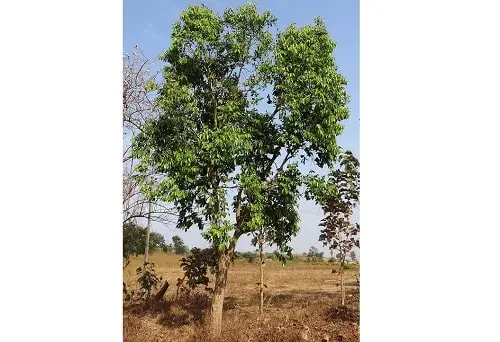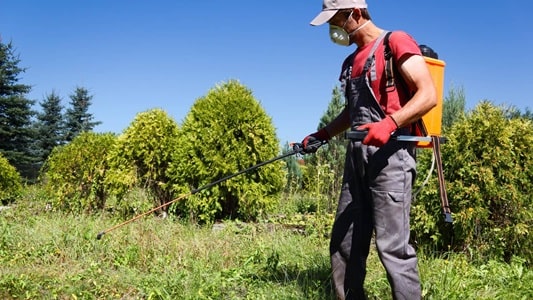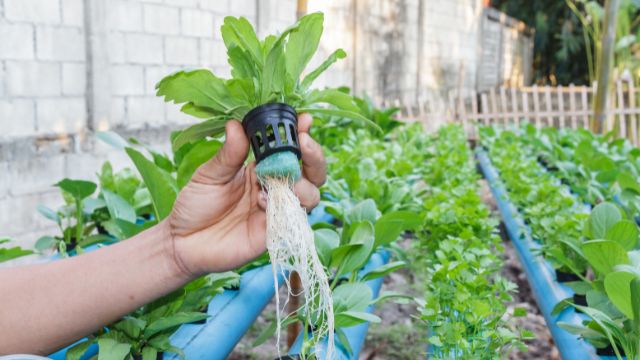We need to learn to appreciate nature more, and trees are a great place to start.
More than just a source of oxygen, they’re critical since they yield food for livestock and people alike. It maintains a pleasant and secure environment. Trees do more than just clean the air and reduce carbon emissions; they also shield humans from pollution and soil erosion.
Warmth in the summer, fresh air in spring, plus protection from bitter winds in the winter: trees are indispensable.
Trees are more than just another form of life out there. It’s like its own universe. People have completely lost sight of the forest’s economic value and are destroying it for profit.
List of Fastest Growing Plants / Trees in India
Reforestation is the single most efficient means by which to revitalize Earth. Step one towards reforesting Earth is within our reach. There are a number of fast-growing trees in India, and below is a listing of top 10 fastest growing plant/trees.
1. Jamun Tree
The height of the Jamun tree is estimated to be between 30 and 35 feet. This is a fast-growing tree that requires little maintenance. The fruit of this tree is much sought for and devoured. In addition to its many other uses, it has been shown to be effective in the treatment of diabetes, indigestion, high blood pressure, and many other medical diseases.
They can live for a century or more if cared for properly. Tree bark is pale grey and smooth higher up, but dark grey & rough lower down. The wood from this tree is impervious to moisture. The leaves emit a lovely odor similar to that of turpentine.
The jamun tree is widespread throughout India. Jamun fruits are high in iron & are said to help with liver and cardiac issues. The powder made from Jamun seeds is commonly used in India for treating diabetes.
All around India, you can find the jamun tree. For their high iron content, jamun fruits have been touted as a potential remedy for conditions relating to the liver and the heart. In India, people with diabetes often take a powder produced from Jamun seeds.
2. Papaya tree
In this country, the papaya tree ranks high among the most sought-after fruit trees. Despite being one of the fastest-growing trees, its lifespan is quite brief. The tree can grow up to 15 feet tall with a single trunk. The delicious and luscious fruit of this tree is a staple in many Indian kitchens. RAW or ripe, fruit is used in many desserts and other sweet foods.
For growing papayas, seeds are commonly used. Their growth is so quick that fruit can be harvested in the first year. There are plants that can survive for 5 years or more if given the right conditions.
Fertilizer is essential for the development and prosperity of papaya trees. Young plants need 14 pounds of full fertilizer every 14 days. An older tree should have one to two pounds of fertilizer applied to it once a month.
Papayas thrive in soil with a high organic content. Root rot can be avoided by planting in well-drained soil.
3. Almond tree
Almond tree is indeed the oldest known tree species to be used in the cultivation of the Almond fruit. It’s related to the rose (Rosaceae) and can develop rapidly. According to legend, the tree can reach a height of 15–20 feet. Almonds are a calorie-dense, dry fruit. It’s loaded with useful elements like protein, fiber, magnesium, and vitamins.
It is a deciduous tree or shrub that produces its first flowers towards the end of the winter. The region around it is reported to be kept cool by its presence.
4. Neem tree
It’s a tree that’s become integral to modern-day life in India. They say it has healing properties, and that’s why it’s so popular. Everything that comes from that tree is put to good use. Both the leaves and the bark have medicinal properties. In the days before modern medicine, this tee played a crucial role in the treatment of numerous illnesses.
5. Oak tree
This particular tree is a great illustration of the species of tree that is native to the mountainous parts of the Himalayas. It is a very important source of fuel wood and is a tree that grows quite quickly. People feed the leaves to their cattle since they are an important source of fodder.
It can be found in the highlands of the tropics as well as the northern temperate zone. The branches of Quercus species can be alternating, deciduous simple, or evergreen, and their margins can be serrated, lobed, or whole.
6. Kapok tree
In the warm climate of India, the kapok trees have a relatively rapid rate of development. It has the potential to grow to a maximum height of 60 meters. This particular tree can thrive even in areas of India with high levels of salt in the soil, and it is most commonly seen in India’s tropical rainforests.
Because of its exceptionally strong build, the wood of kapok tree is frequently utilized for the production of coffins. The leaves of these trees have an evergreen quality and cluster together to form a canopy. In addition to the production of its wood, it is also planted for the production of its fibre and floss.
7. Amrood tree
This tree is popular around the country because it produces the delicious guava fruit. As well as being available all year round, it is widely distributed across India. One of the simplest trees to care for, this one can reach a height of about 30 feet. The ideal conditions for this tree include fertile, well-drained soil. Backyards typically have this. The tree is easily recognizable due to its smooth, light, copper-color bark which flakes off, revealing the greenish layer underneath. Since this tree also produces flowers, it satisfies the eye as well as the other senses.
8. Ber tree
The Indian Plum, also called the Chinese date, grows in several parts of India. Bone density is improved and other medical conditions treated with its fruit. The ber tree grows quickly and steadily to a moderate height. Climate determines whether it is deciduous or evergreen. It has a robust taproot system that can quickly adapt to dry soil. It is renowned for its resilience in the face of adversity, having survived salinity, drought, & water logging.
9. Mangrove tree
In the tropics and along the coast, you can find these mangrove trees. People come from far and wide to trek through mangrove forest because of the majesty and size of its trees. When it concerns to maintaining a healthy ecology, these trees are crucial. A further benefit to national and coastal security is the cover provided by the dense vegetation.
These trees’ roots are being nurtured as they grow, and the area is also functioning as a nursery. As far as air purification and preserving soil from erosion go, these trees are hard to beat. Also, some aquatic critters call these mangroves home.
10. Semal tree
Semal Tree is also known by its scientific name, Bombax Ceiba. The English name for the semal tree is silk cotton tree. This Semal Tree, native to damp tropical climates, can reach heights of 20 meters on average. One can expect to see a mature Semal tree reach heights of 60 meters.
This tree loses its leaves every winter because it is deciduous. People have been reaping benefits from the semal tree for quite some time. This tree is beneficial to humans, animals, and birds alike. Revenue can also be generated through the sale of natural trees that sprout up in and near woods and settlements.
Conclusion
You can also make a contribution to aid this fantastic undertaking by planting trees. If everyone in India plants just five fast-growing trees, the country will soon be carbon neutral.


